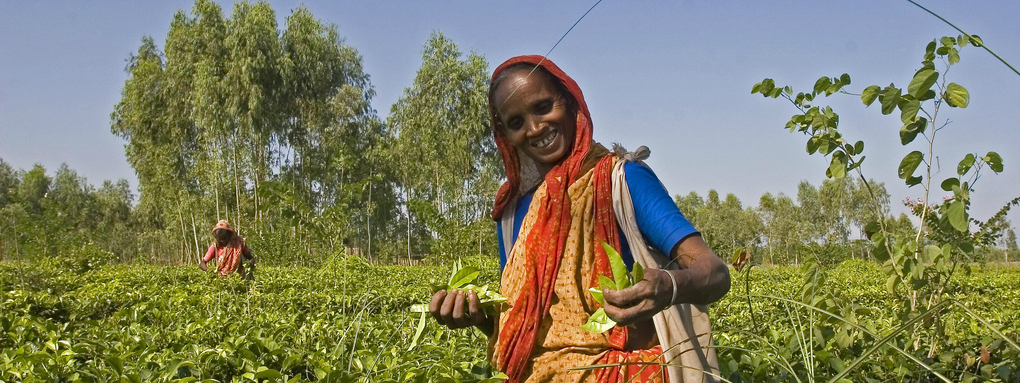
The origin of tea is every bit as fascinating as the drink itself. While many people assume that green, white, black, green, pu-erh and oolong teas come from different plants, each type of tea begins as Camellia sinensis. The distinctions between these six teas comes not from the type of plant, but rather from how the tea is prepared after the plant has been harvested. Teatulia®’s organic tea blends are made from the same plant, and are processed with care and expertise—which offers you the best teas you’ll taste.
Camellia sinensis: the tea plant
The process of harvesting the plant can have a significant impact on the resulting tea. Typically, Camellia sinensis is grown in special tea gardens. The best tea gardens are found in cooler climates, where the Camellia sinensis thrives; if left alone, this remarkable plant can grow to 30 feet tall. Tea growers keep their gardens cut back to improve the taste of the tea and make the harvesting process easier. During the harvest season, the finest teas are hand-picked by tea experts who know how to choose the best tea leaves. For finer teas, this means sticking exclusively to the two uppermost tea leaves, along with leaf buds located at the tips of the stems.
How your favorite teas are made
Immediately following a tea harvest is the withering process when tea leaves are set out to dry. Once the moisture has been removed from the tea leaves, they are then rolled and fermented. The fermentation process is important in that it produces the essential oils that give teas their distinctive aromas and flavors. When fermentation is complete, tea leaves are sorted out by size. Most teas include a combination of full leaves, smaller leaf pieces and tea dust. This unique combination gives more character to each batch.
Although oolong, white, black and green tea is all made from the same plant, herbal teas have a different background. Unlike the teas described above, herbal teas typically don’t come from tea leaves. Instead, they’re most commonly made from seeds, berries, flowers or roots. Herbal teas can be created from a variety of plants, including (but not limited to) chamomile, peppermint, dandelions, hibiscus, barley, sage and rosemary.
The wonderful thing about tea is that no matter which type you prefer, you can always discover a unique experience when you brew a cup. Tea drinkers have enjoyed the relaxing aura surrounding this popular beverage for millennia and, based on the recent resurgence of tea, that tradition is not likely to die out anytime soon.

